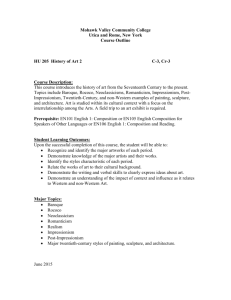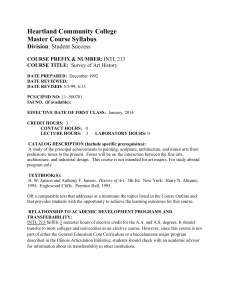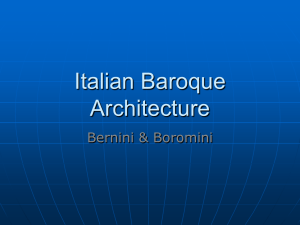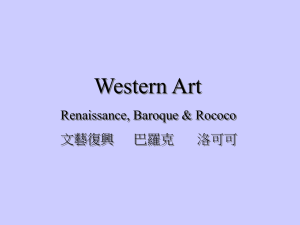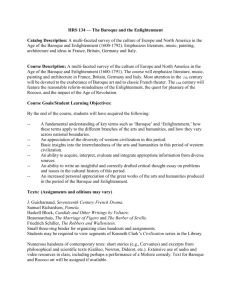CH16 Test Bank-baroq..
advertisement
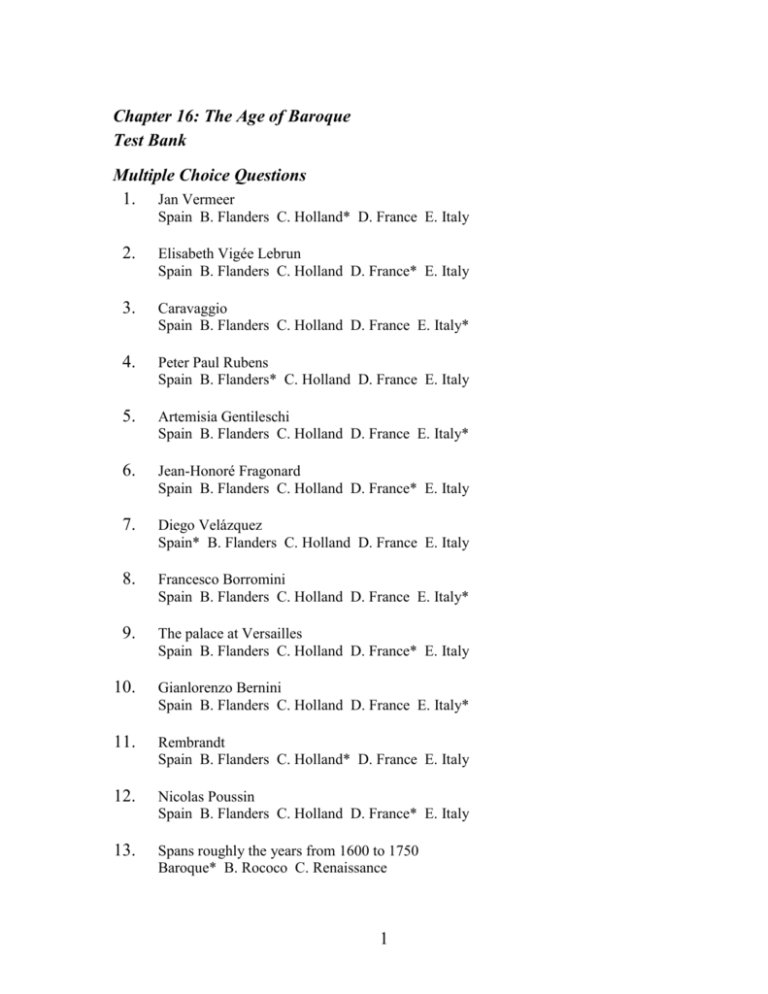
Chapter 16: The Age of Baroque
Test Bank
Multiple Choice Questions
1. Jan Vermeer
Spain B. Flanders C. Holland* D. France E. Italy
2.
Elisabeth Vigée Lebrun
Spain B. Flanders C. Holland D. France* E. Italy
3.
Caravaggio
Spain B. Flanders C. Holland D. France E. Italy*
4.
Peter Paul Rubens
Spain B. Flanders* C. Holland D. France E. Italy
5.
Artemisia Gentileschi
Spain B. Flanders C. Holland D. France E. Italy*
6.
Jean-Honoré Fragonard
Spain B. Flanders C. Holland D. France* E. Italy
7.
Diego Velázquez
Spain* B. Flanders C. Holland D. France E. Italy
8.
Francesco Borromini
Spain B. Flanders C. Holland D. France E. Italy*
9.
The palace at Versailles
Spain B. Flanders C. Holland D. France* E. Italy
10.
Gianlorenzo Bernini
Spain B. Flanders C. Holland D. France E. Italy*
11.
Rembrandt
Spain B. Flanders C. Holland* D. France E. Italy
12.
Nicolas Poussin
Spain B. Flanders C. Holland D. France* E. Italy
13.
Spans roughly the years from 1600 to 1750
Baroque* B. Rococo C. Renaissance
1
14.
Andrea Verrocchio
Baroque B. Rococo C. Renaissance*
15.
Fragonard
Baroque B. Rococo* C. Renaissance
16.
Tenebrism created during the period
Baroque* B. Rococo C. Renaissance
17.
Piazza of St. Peter's
Baroque* B. Rococo C. Renaissance
18.
Donatello
Baroque B. Rococo C. Renaissance*
19.
Versailles
Baroque* B. Rococo C. Renaissance
20.
Church of San Carlo alle Quattro Fontane, Rome
Baroque* B. Rococo C. Renaissance
Completion/Fill-in-the-Blank Questions
21. The Baroque was born in the city of ____________.
{{Rome}}
22.
3. St. Peter's in Rome stands as a hallmark of the ____________ style.
{{Baroque}}
23.
5. We may compare the difference between Michelangelo's David and Bernini's
David to the difference between Classical and ____________ Greek sculpture.
{{Hellenistic}}
24.
*6. Bernini's Ecstasy of St. Theresa combined the arts of sculpture,
____________ and painting.
{{architecture}}
25.
*7. Unlike Bernini's somewhat idealized facial and figural types, the models for
Caravaggio came literally from the ____________.
{{streets}}
26.
*8. Caravaggio's exaggerated chiaroscuro is often called ____________, or "dark
manner."
{{tenebrism}}
2
27.
*9. Among the foremost painters of the Italian Baroque was Artemisia
____________, the daughter of a successful Roman artist.
{{Gentileschi}}
28.
The Italian Baroque artist who acquired a lengthy police record for such things as
attacking a man with a sword, carrying weapons without a permit, and breaking
windows was ____________
{{Caravaggio}}
29.
While the typical Renaissance ceiling painting was stable: organized by
compartments or "frames," during the Baroque artists such as Baciccio attempted
to create the illusion of a ceiling vault ____________ to the heavens.
{{open}}
30.
____________, a much sought-after painter, was also an ambassador and
diplomat.
{{Rubens}}
31.
Rubens's style combined the sculptural qualities of ____________'s figures with
the painterliness and coloration of the Venetians.
{{Michelangelo}}
32.
Rembrandt's brush strokes are often heavily loaded with pigment and applied in
thick ____________.
{{impasto}}
33.
Rembrandt's ____________ alternately constructs and destructs, alternately
bathes details and hides them.
{{light}}
34.
If there is a single artist who typifies the Dutch interest in paintings of scenes of
daily life, it is ____________.
{{Vermeer}}
35.
During the Baroque period, ____________ began to replace Rome as the center
of the art world.
{{France}}
36.
Louis XIV preferred a ____________ style of art.
{{Classical}}
37.
Louis guaranteed adherence to Classicism by forming ____________ of art that
perpetuated this style.
{{academies}}
3
38.
The principal exponent of the Classical style in French Baroque painting was
____________.
{{Poussin}}
39.
In Fragonard's Happy Accidents of the Swing we are offered a glimpse of the love
____________ of the leisure class.
{{games}}
40.
____________ was named official portrait painter for Marie Antoinette.
{{Vigée Lebrun}}
Discussion Questions
41. Describe the similarities and differences among the statues of David by the
following artists. For each statue describe the state of mind or emotion projected
by the depiction of the young warrior.
a. Donatello
b. Verrocchio
c. Michelangelo
d. Bernini
42.
Why is there no way for the viewer to escape the graphic violence of Artemisia
Gentileschi's Judith Decapitating Holofernes?
43.
Critical discussions of Artemisia Gentileschi's Judith Decapitating Holofernes
invariably raise the fact of Artemisia's rape. Does knowing that fact affect your
"reading" of the picture? Whether you answer "yes" or "no," explain your choice.
44.
Discuss Francesco Borromini's San Carlo alle Quattro Fontane in terms of the
Baroque fascination with motion, space, and light.
45.
Is it more useful to consider Borromini's architectural designs as architecture or
sculpture? Why?
46.
Discuss the subject matter of Velásquez's Las Meninas. The artist is included in
the picture, presumably painting a portrait. Use the evidence of figures depicted in
the painting to determine as best you can whose portrait is being painting.
47.
Explain how Rubens used the intersection of strong diagonals and verticals to
stabilize what otherwise would have been an unstable composition in his Rape of
the Daughters of Leucippus.
4
48.
Talk about Rembrandt's Self Portrait of 1652 in terms of the projection of his
personality and of the moment and the absence of concrete representational
details. How do these two facets of the painting work together?
49.
Compare and contrast the relationship of style and content in the Resurrection
paintings of Rembrandt and Piero della Francesca. Which seems to be more
consonant with the subject of the resurrection? Why?
50.
Describe how Poussin's composition in The Rape of the Sabine Women stabilizes
this scene of chaotic activity.
5



